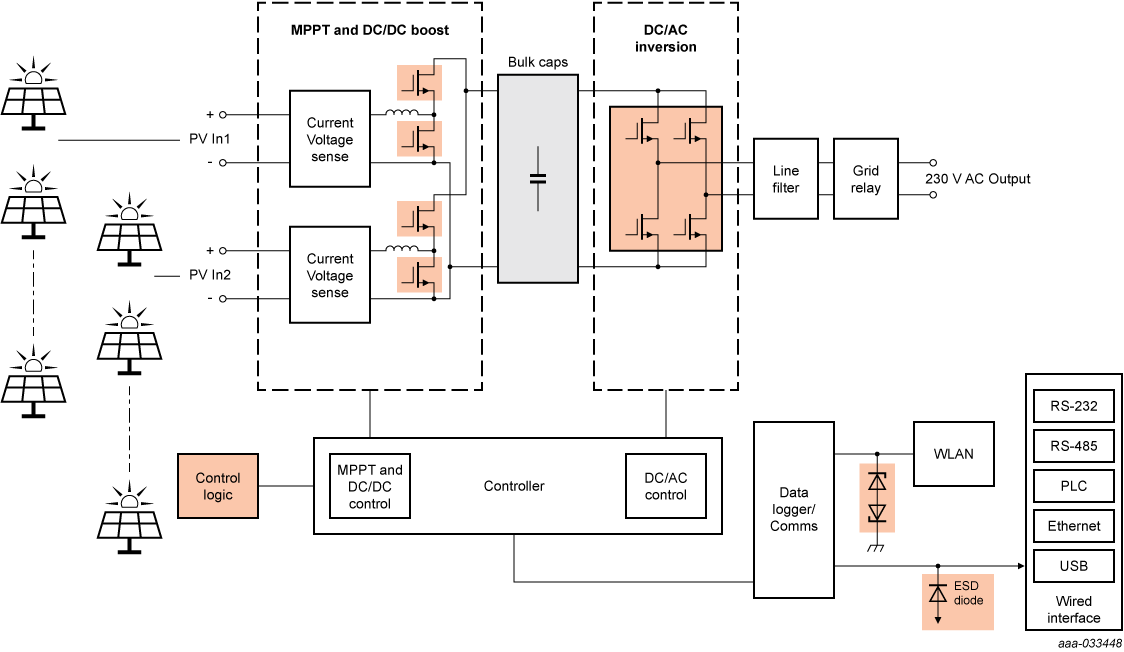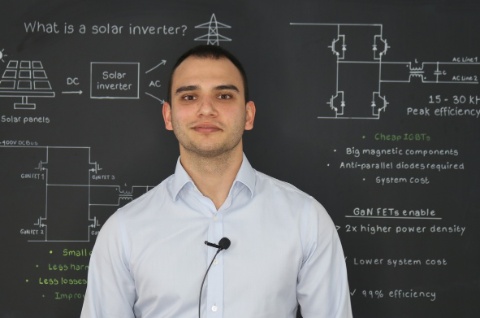Products
Design considerations
- Choice of topology for DC/DC and DC/AC conversion, but isolated half-bridge boost and full bridge inverter offer the highest efficiencies
- Need to ensure a optimal gain ratio on the half-bridge boost and a 50% duty cycle
- Despite IGBTs dominating the DC/AC stage due to their very low cost, GaN FETs allow for higher efficiency and smaller line filters.
GaN shines a light on PV inverter efficiency
When it comes to solar as a renewable power source, there have been two main challenges – efficiency and cost. To gain a boost in total system efficiency when using solar power, many engineers are switching to GaN FETs in their solar inverter designs.

